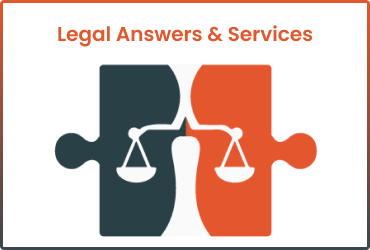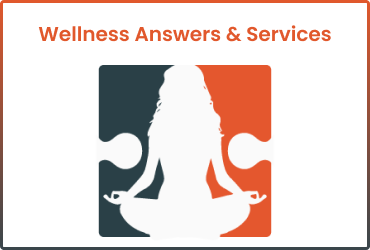This article covers the legal mechanics at play when multiple drivers are at fault in motor vehicle accidents and how liability gets apportioned between competing parties in a lawsuit.
Multiple Parties At Fault In Car Accidents
What happens if the accident is partially my fault?
The short answer is that there is an apportionment of fault between plaintiff and defendant, and in some cases, multiple defendants.
Comparative Verses Contributory Negligence
Comparative Fault
In personal injury law, “comparative negligence” refers to determining which drivers were at fault and who among the defendants must share in the potential liability for causing the accident and the injuries claimed by the plaintiff.
Comparative negligence can also be used as a defense that can impact the total damages a plaintiff can recover based on the degree of the plaintiff’s own negligent acts or omissions. If the plaintiff was partially at fault, that percentage of fault would be deducted from the total sum plaintiff’s recovery.
Contributory Fault
Again, depending on what system of fault your state follows in apportioning liability between the parties, you may be barred from recovering all or some of the damages.
For example, suppose the plaintiff is apportioned to be fifty percent or more at fault. In that case, the state’s laws may bar the plaintiff from recovering any damages whatsoever from the defendant.
This may not sound fair to many people, especially if the plaintiff suffered more extensive injuries than the defendant – and what if the plaintiff did not have health insurance or very high deductibles?
Some legal historians believe this was one of the reasons some states did away with contributory negligence and went to a no-fault system of apportionment of liability.
No-Fault Insurance States
Mandatory No-Fault Insurance States
Mandatory no-fault states do not allow residents to opt out of their no-fault system. As of 2023, the following nine states fall under mandatory no-fault insurance programs:
- Florida
- Hawaii
- Kansas
- Massachusetts
- Michigan
- Minnesota
- New York
- North Dakota
- Utah
Non-Mandatory No-Fault States
As of 2023, the following three states allow their residents to choose to “opt-out” of their state’s no-fault insurance program:
- Kentucky
- New Jersey
- Pennsylvania
More On Comparative Law States
Most other states use a comparative fault system based on an apportioning fault between the opposing parties. However, not all states have the same type of comparative fault systems. Given this fact, let’s look at how comparative-fault liability laws generally operate.
In most comparative law liability states, the jury will assign a percentage of negligence to each driver, which governs the recovery amount the plaintiff can receive.
Apportionment In A Rear-End Collision
Let’s assume a defendant rear-ended the plaintiff while the plaintiff was in the process of slowing down to stop for a red light when the defendant was traveling at a high rate of speed.
During the trial, the jury learned that the plaintiff’s brake lights were not working. To make matters worse, the defendant testified that he would have slowed down had he seen the brake lights. The jury also learned that the plaintiff knew the brake lights had been in disrepair for nearly two weeks before the accident.
The facts of the incident suggest that there be an apportionment of fault between the two parties.
Before the jury begins their deliberation, the judge will provide the jury with written instructions that they must follow. In this case, because comparative fault is an issue, the jury is given a special jury instruction that specifically asks what percentage of fault they assign to the defendant and what percentage of fault they assign to the plaintiff.
The jury deliberates on the special jury instruction, and responds as follows:
We, the jury, find:
- the defendant to be: 75% at fault.
- the plaintiff to be: 25% at fault.
Let’s assume the total damages the jury found for the plaintiff was $100k. The judge will then apply the comparative fault rules of the state and determine the plaintiff’s net recovery by deducting the plaintiff’s 25% comparative fault, leaving the plaintiff with a final judgment of $75k against the defendant.
Let’s look at another example involving an injured passenger in the plaintiff’s vehicle.
Cross Claims – Injured Passenger
- I was in a multi-vehicle personal injury accident. The accident was not my fault. Although my lawyer says, I might be partially at fault. I had a passenger in my vehicle. My lawyer said our case would likely have multiple parties and, consequently, multiple cross-complaints, but I am unsure what this means. Can you explain?
- A. The party that brings the lawsuit claiming damages due to another person’s wrongful conduct, usually negligence, is the plaintiff. The defendant is the party against whom you believe was legally responsible for the accident.
Multiple Plaintiffs and Defendants
Since the plaintiff, in this case, had a passenger in their vehicle, and if it is later determined during the discovery process that you, the driver, may have been partially at fault for the accident, your passenger’s lawyer may determine it would be in the passenger’s best interest to sue you as well as the defendant-driver.
In many states, your passenger’s lawsuit is considered a cross-claim, and you would become a cross-defendant – even though you were initially on the same side. This can be a very uncomfortable and legally challenging position, especially if the passenger and the driver are close friends.
Sometimes the lawyer and client must decide who among the multiple defendants they will pursue as the primary cause of the accident. For example, it is not hard to imagine a scenario in which the plaintiff-driver had a million dollars in liability coverage and the other defendant drivers had only minimal coverage. Add to this scenario that it was the passenger who suffered the worst injuries and had no medical insurance.
When A Driver Has No Insurance
Recovering Damages From Your Own Insurance Company
If the driver at fault did not have liability insurance, uninsured motorist insurance (UMI) contractually obligates your insurance company to pay you for all damages you would have otherwise been entitled to recover from the uninsured driver up to the limits of your own insurance coverage.
Possible Exclusions And Limitations To UMI Coverage
There are exclusions to uninsured motorist coverage. Your insurance company will not pay for punitive damages you might not be entitled to recover from the other driver.
Deductible Waivers
Some uninsured motorist policies include a deductible waiver, meaning you will not have to pay the deductible even though you will be using your collision/comprehensive coverage.
Extra Premium Cost For UMI Coverage
UMI coverage is not come free, especially if the insured wants the highest possible UMI coverage available. Although the extra charge will cost more money, it’s usually worth it given the number of uninsured drivers on the road, and the only coverage you may have in a serious auto accident is from your own UMI coverage.
Statute of limitations
In most states, the same time limits apply to asserting a UMI claim with your insurance company, as does filing a lawsuit against the uninsured driver. In many states, you can protect your right to assert a UMI claim by filing a lawsuit against the other driver or sending a registered letter to your insurance company notifying them that you intend to make an uninsured claim. Either must be done within the time limits imposed by law.
If you pursue an uninsured motorist claim, you must demonstrate by a preponderance of the evidence that you suffered injuries and that the uninsured motorist was the factual and legal cause of your injuries.
Personal Injury Lawyers
As you can tell, determining the legal status of a party to a lawsuit where multiple parties are in multiple vehicles can get complicated quickly, so you should have an experienced personal injury attorney with a proven track record representing you as early in the process as possible.
If you have questions or require additional information about your legal rights and obligations, consult a verified Personal Injury Lawyer as soon as possible.













